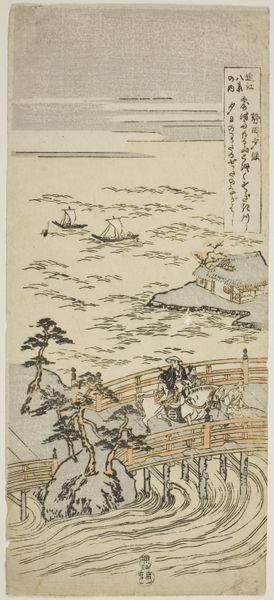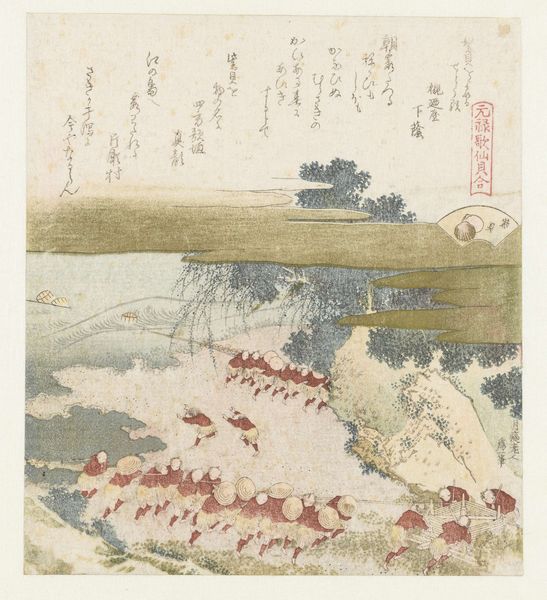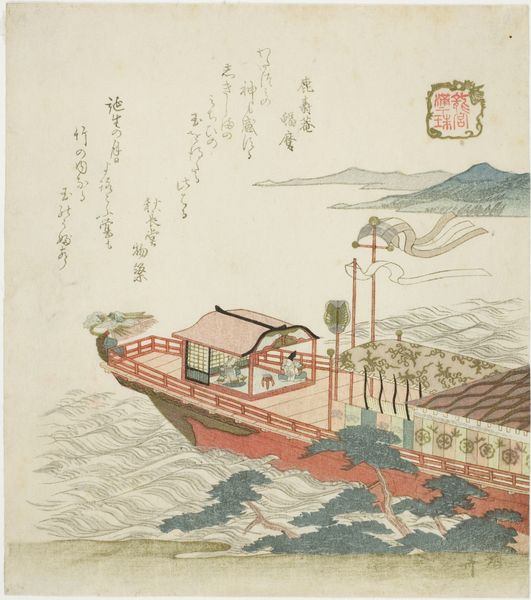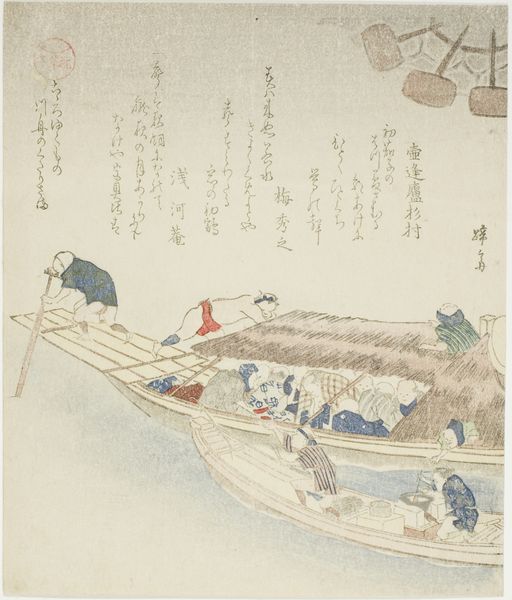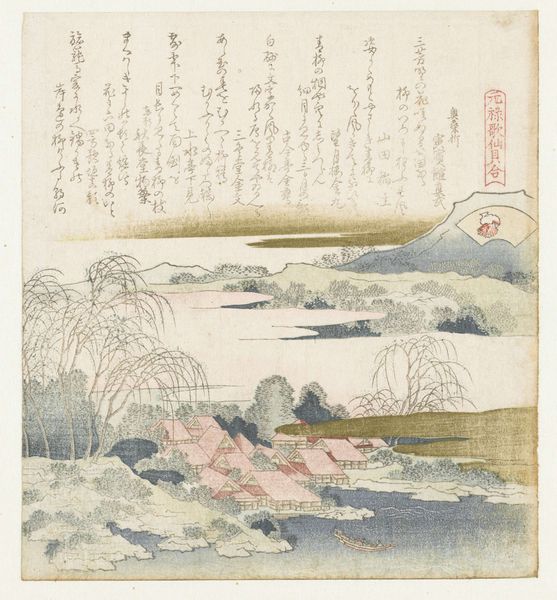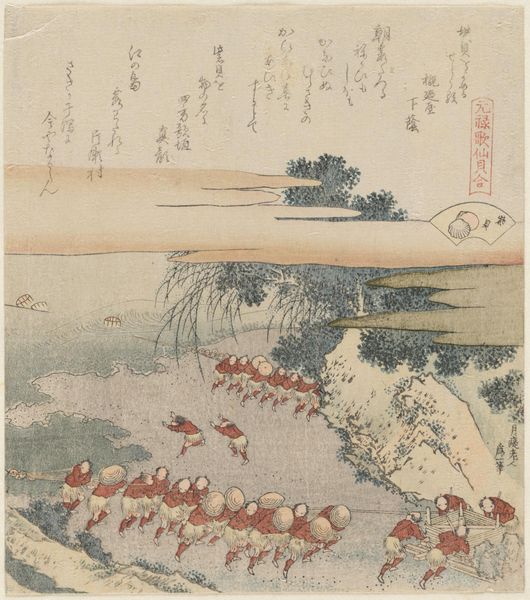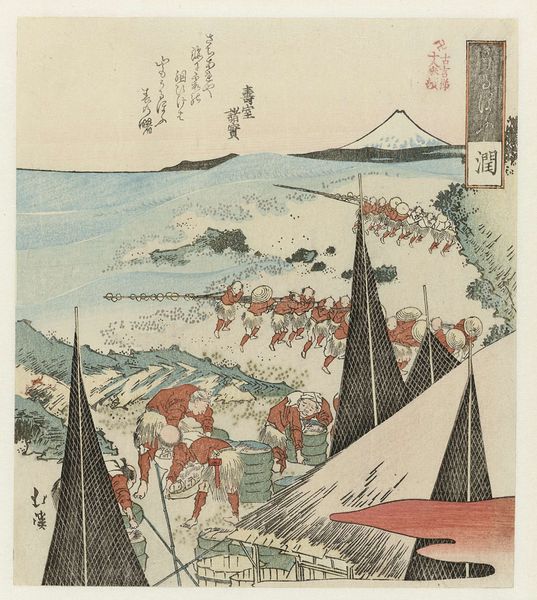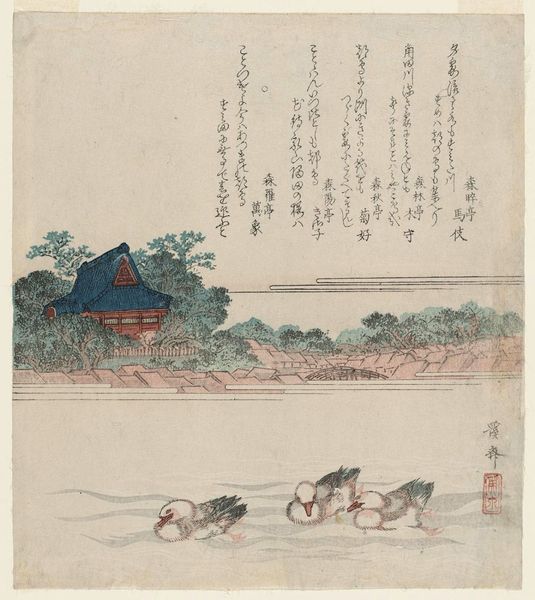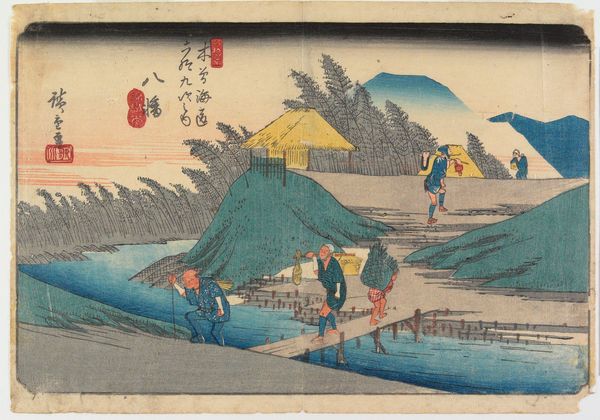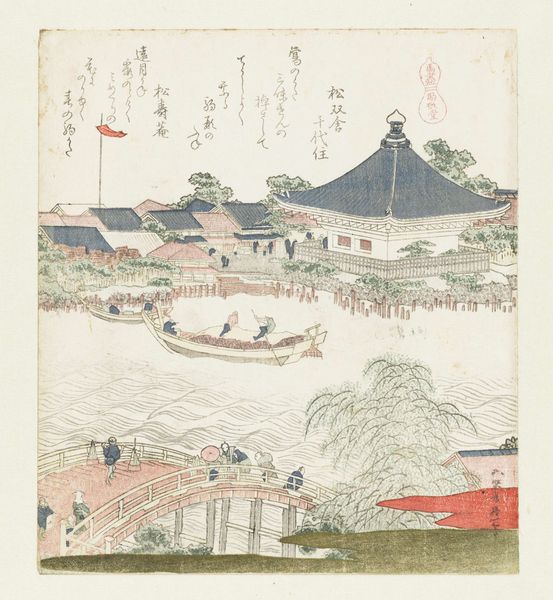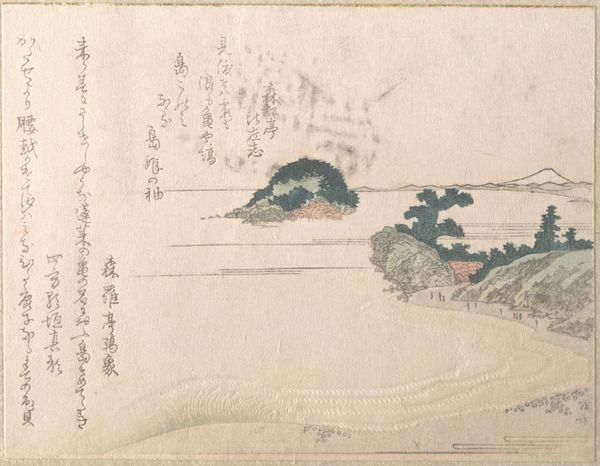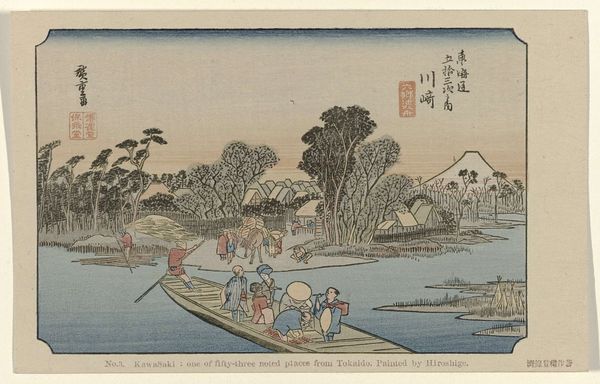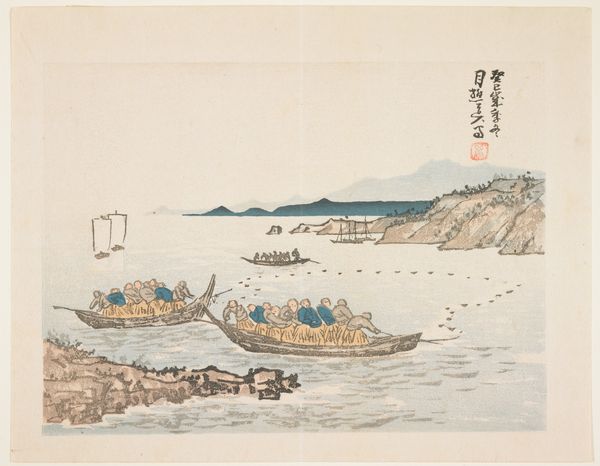
print, woodblock-print
# print
#
landscape
#
ukiyo-e
#
woodblock-print
#
orientalism
Dimensions: height 207 mm, width 182 mm
Copyright: Rijks Museum: Open Domain
Katsushika Hokusai’s woodblock print, *De Onmaya rivieroever*, invites us to consider the social life of Edo-period Japan. Made without a specific date, the print captures a busy river scene, complete with travelers, boats, and even a kite in the sky, all set against a backdrop of traditional Japanese architecture. Hokusai’s detailed rendering of daily life offers insight into the values and customs of his time. We see, for example, a rigid social hierarchy with different modes of transport indicating class distinctions. Hokusai’s work exists within a rich institutional context. As a popular art form, woodblock prints were widely accessible and often depicted scenes of everyday life, entertainment, and travel. They served as a kind of social commentary, reflecting the interests and concerns of the merchant class. Understanding this print requires delving into the history of Edo-period Japan, researching its social structure, economic activities, and the role of art in shaping public perception. What can we learn about the social lives of Japanese people from the 18th and 19th centuries based on popular imagery?
Comments
No comments
Be the first to comment and join the conversation on the ultimate creative platform.
